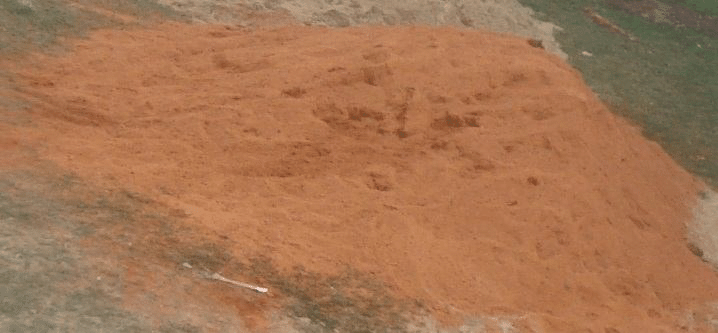Table of Contents
Surkhi is a powdered form of over burnt broken brick or clay balls.
The name surkhi is derived due to its reddish color.
✔ Surkhi shows pozzolanic properties and is composed of about 40 to 63 % of silica by weight.
Surkhi has various names differing from nation to nation. It can be called :
India, Nepal, Pakisthan, Bangladesh,etc – surkhi
Indonesia – semen merah
Egypt – homra
England, Europe & USA – trass, brick dust
✔ It should be noted that surkhi is not a chemically inert substance and hence it can’t be used as adulterants with the matrix as cement.
Surkhi can be used as an admixture but sand should not be replaced completely by surkhi in cement mortar or cement concrete.
To reduce the temperature rise during hydration in the mass of concrete; a small amount of surkhi can be added. This also eliminates the cracking of concrete.
Surkhi added concrete is more plastic, bleeds less, and segregates less as compared to ordinary concrete
✔ Before, there were no fixed standards for Surkhi. However, now there are specifications describing details in IS: 1344 – 1981.
1. Mechanism of Manufacturing
In the factory; clay is burnt the same as bricks but at a high temperature of about 600° C to 1000° C in a furnace.
Then, over burnt product gains a reddish color.
It is then transferred to a mill and ground into powder such that powder is fine enough to pass IS No. 9 sieve and the residue should not be more than 10% by weight.
Thus obtained product is surkhi.
| Read More: Prismatic Compass |
2. Uses
a. It can be used as sand in mortar known as Surkhi mortar. ( Surkhi mortar is the mixture of lime, surkhi, and water. It is economically accessible too.)
b. It can be used for waterproofing treatment.
c. It can be used as plaster. (External wall plastering is not preferred with surkhi mortar. But external pointing work can be carried out. )
d. It can be used as an admixture in cement mortar or cement concrete.
3. Advantages
a. Resistive to alkalis and salt solutions.
b. Shows pozzolanic properties.
4. Disadvantages
a. Disproportionate amount of silica-containing clay in surkhi can cause less cohesion, cracking, shrinking, and warping.
b. It cannot resist the long exposure to humidity, weathering, etc.
5. Storage
Surkhi shall be protected from dampness and rain and shall be stored in a closed storeroom.
| Read More: Grades of Concrete |

